Your cozy home and its inviting fireplace has the potential to attract unexpected guests – and we’re not talking about neighbors, in-laws, and your great-aunt Mildred. We’re talking about guests of the animal variety.
It’s not uncommon for animals to find their way into chimneys, seeking refuge from the elements or predators, or mistakenly stumbling upon what they perceive to be an ideal shelter. But once in your chimney, birds and mammals aren’t innocuous in their effects. How should you respond to an animal in your chimney system? And what preventative measures can you take to keep them out?
Here are some basics about what happens – and what action you should take – when animals find their way into your chimney. And if you have additional questions, be sure to reach out to see how we can help.
Why Are Animals in My Chimney?
Some common chimney intruders include:
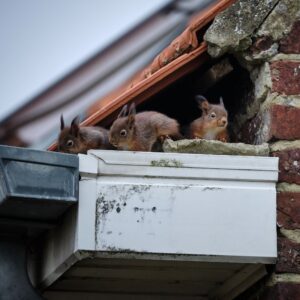 Birds. Chimneys often resemble natural nesting spots for birds, providing elevation and shelter for their nests.
Birds. Chimneys often resemble natural nesting spots for birds, providing elevation and shelter for their nests.- Squirrels and raccoons. These agile climbers can scale your home or use any overhanging branches as convenient pathways to your chimney. They may mistakenly venture down in search of a secure place for a den or a rest.
- Bats. Because they’re dark and secluded, chimneys can be appealing as a roosting spot for bats.
- Rodents. Mice and rats are notorious for exploring any accessible spaces in search of food or shelter.
It may seem harmless to have an animal nesting in your chimney, especially if it isn’t during the burning season, but there are a number of issues that playing host to wildlife can present.
Animals can obstruct the chimney flue, either with their bodies or with debris they create or carry in, preventing proper ventilation. These blockages can increase the risk of harmful gases like carbon monoxide entering your living space. Blockages also become fire hazards, increasing the risk of a chimney or other uncontained fire.
Animals don’t also create blockages in your flue, they can also create damage in your chimney system. Gnawing, scratching, and nesting can cause structural damage to your chimney’s interior. And there are health risks associated with animal droppings, parasites, and diseases that some animals carry, as well as the unpleasantness of noises and odors animals can generate.
How Should I Respond To an Animal in My Chimney?
If you suspect – or have confirmed – that there’s an animal in your chimney, there are two calls you may need to make. If a live animal is trapped and in distress, you can call animal control or a licensed wildlife removal service. They’ll use their training to try to execute a humane removal with attention to safety. Keep in mind that animals that are afraid can act unpredictably, so keep children and pets out of the way.
Calling your chimney technician may also contribute to animal removal, as we have tools that help us access different areas of your chimney system. In prefabricated fireplaces, animals may find their way into areas outside the flue, which will require specialized removal techniques.
Abstain from using your heating appliance if you have an animal issue. While some homeowners think smoke will drive animals out, if the animal is trapped or can’t make its way out and dies, your problem is increased rather than solved!
It’s important to know that one creature that’s particularly partial to chimneys is the aptly named chimney swift, a gray, acrobatic, migratory bird that can’t perch. Instead, chimney swifts cling to vertical surfaces, using their saliva to create nests to adhere to places like the inside of your chimney flue. These birds are protected by the Federal Migratory Bird Treaty Act, and removing an active nest is punishable by jail time and/or substantial fines. If you have a family of chimney swifts, you’ll need to wait for removal until all young have left the nest.
The Animal Is Removed – Now What?
In addition to helping remove the animal, your chimney sweep technician should be called upon to sweep and inspect a chimney that’s recently been infested. With the animal removed, sweeping the chimney will clear any leaves, twigs, droppings, feathers, or other debris from the nooks and crannies of your chimney system. This will help ensure that your system is unobstructed and ready for safe use again. If you notice odors coming from your chimney, the animal may have expired and animal removal, sweeping, and inspection is also needed.
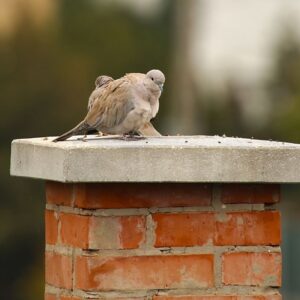 Another step to take once the animal is removed is asking your chimney professional about how to keep animals out in the future. This is one of those “an ounce of prevention is worth a pound of cure” cases.
Another step to take once the animal is removed is asking your chimney professional about how to keep animals out in the future. This is one of those “an ounce of prevention is worth a pound of cure” cases.
If you don’t have a chimney cap, or if it’s in disrepair, installing one will be an important first line of defense. A chimney cap sits on top of your flue, where it guards against anything entering your chimney. This won’t only help with animals, but other debris and precipitation that can be harmful for your system. The chimney cap covers the opening of your chimney exhaust while still allowing smoke and gases to vent.
Another helpful addition that may be recommended for your masonry fireplace chimney is a top-sealing damper, which helps control ventilation but would also aid in preventing animal intrusion by acting as a physical barrier. Finally, having your chimney inspected yearly will help identify and address potential entry points for wildlife and address them – as well as serving a number of other vital purposes.
Don’t Stress – We’re Here to Help
While it’s disconcerting to realize an animal has made its way into your living space, don’t panic. We’re here to help, and to offer solutions to guard against recurrence. We’re in the business of helping you keep your chimney system running safely and optimally – and that includes wildlife staying in the wild and not in your chimney!
With some action steps and a little help from your friendly neighborhood pros here at Lords Chimney, you’ll be back to enjoying your fireplace soon. Call or reach out online now.
Do you hear scratching sounds throughout your house or smell foul odors from the fireplace? If so, you just might have unwanted animals in your chimney.
However, there’s no need to panic. With our experts on your side, you can prevent these unwelcome guests from causing bigger problems. The Lords Chimney crew is here to discuss the basics of animal removal, including signs to watch out for, the risks you face, and how to protect your home from a future intrusion.
Signs of Wildlife Invasion
Having small creatures in your flue might seem harmless, but it’s best to hire wildlife removal services as soon as possible to protect the health and safety of everyone in your home. Let’s go through some of the common signs of animals in your chimney.
- Droppings: When animals build nests, they usually leave droppings around them. As soon as you notice animal waste in your fireplace, it’s almost a sure sign that you have critters living in your chimney.
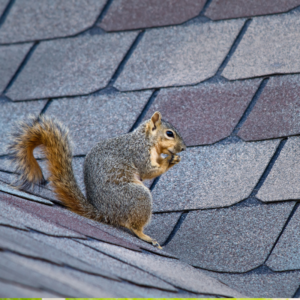 Fur & Feathers: In addition to droppings, you might also notice fur and feathers on your roof or fireplace. Once you see these signs, it’s a safe bet that they’re living in your flue. Birds, squirrels, and raccoons are the most popular chimney dwellers.
Fur & Feathers: In addition to droppings, you might also notice fur and feathers on your roof or fireplace. Once you see these signs, it’s a safe bet that they’re living in your flue. Birds, squirrels, and raccoons are the most popular chimney dwellers.- Strange Sounds: Hear chirping, squeaking, or clawing sounds come from somewhere in your home? Don’t rule out the chimney – you might have a house guest on your hands.
- Foul Odors: When animals live in your flue, it can take on a distinct and unpleasant odor. You might get a whiff of urine, droppings, or the food they bring in. Worst of all, if a creature dies in your chimney, it will emit the pungent smell of decay – and attract pests too.
- Stressed or Excitable Pets: If you notice your dog or cat become agitated around the fireplace, your house might have an infestation. Pets are more receptive to other creatures than humans, so they’re likely to notice signs before you do.
If you notice any of the signs above, schedule a chimney evaluation immediately.
Negative Effects of Animals in Your Chimney
Animal removal services are the only way to remove your uninvited guests and restore your home to the calm and clean state it was in before. We’ll walk you through the ways in which these intruders can threaten your peace and damage your home.
- Increased Risk of Fire: Animal nests can cause blockages and poor ventilation. They can easily catch fire and allow smoke to back into your home. If you’ve noticed signs of birds or other creatures seeking refuge in your flue, it’s best to call a professional as soon as possible to keep your loved ones and your home safe from harm.
- Potential Spread of Disease: Seeing animals in forests and gardens may be cute, but they can be dangerous when they enter your home. While they don’t typically hurt people directly, their droppings, dander, and any pests they bring along with them can make people sick. They are particularly dangerous for people with compromised immune systems and severe allergies.
- Flue Damage: Even the littlest creatures can cause big issues throughout your chimney system. When they get into your chimney, they leave your flue vulnerable to damage from debris, water, and other pest. This can eventually expose surrounding materials to heat or flue gases, creating a home hazard – and may require your chimney liner to be repaired too.
- Clogging & Poor Airflow: Animal nesting materials are known to clog your flue quickly, and if the animals pass away inside your system, this can also cause blockages. Drafting problems not only cause your system to operate inefficiently, but can cause smoke back-up and fire hazards too.
- Inconvenience: Some animals, like chimney swifts, are protected by the Migratory Bird Treaty Act so, once they nest, you’re stuck with them until they leave again. You can then install chimney caps to keep them from coming back, but you can’t forcefully remove them from your home.
Ways to Protect Your Home from Wildlife Invasion
So, how do you keep animals out of your chimney? We recommend the strategies below.
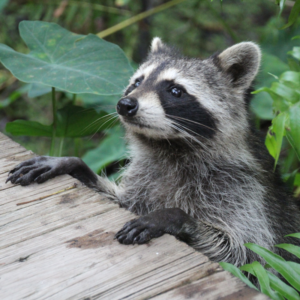 Seal Your Home: The easiest and most convenient way to keep animals out of your property is to seal your home. We recommend installing a quality and properly-sized chimney cap to achieve this. It’s also ideal to close any other openings in your home, including roof vents and any small gaps and cracks in your roof or walls.
Seal Your Home: The easiest and most convenient way to keep animals out of your property is to seal your home. We recommend installing a quality and properly-sized chimney cap to achieve this. It’s also ideal to close any other openings in your home, including roof vents and any small gaps and cracks in your roof or walls.- Keep Your Yard Tidy: Animals typically look for the same things that humans do in a home — protection from the elements, safety from predators, and a reliable source of food and water. When your lawn offers all of the above, it will attract various animals that might eventually find their way into your chimney. That said, things like raking leaves, picking up loose debris, and disposing of food scraps properly can make a big difference in keeping them away. It’ll also helps to make sure tree limbs are trimmed back at least 10 feet from the chimney structure.
- Schedule Regular Chimney Inspections: Homeowners are responsible for keeping wildlife away from their property, but nobody expects you to know everything about removing animals from your flue. If you suspect an animal has entered, call in a professional for an inspection right away. In these cases, the sooner you act, the better.
Book a Houston Chimney Sweeping Session Now
Trust us on this – when it comes to unwanted animal guests, prevention is better than cure. If you’re interested in putting up some safeguards to prevent creatures from entering your home, we’re here to help.
At Lords Chimney, our technicians boast unmatched experience, and we use the latest technology to keep our customers’ chimneys, fireplaces, and dryer vents in peak condition all year long.
Call us now at 832-280-9233 or reach out online to request a free, no-obligation quotation.
Hearing strange noises from your chimney? There’s a good chance you have chimney swifts residing close by! Chimney swifts are one of the more common creatures you’ll see inside your chimney system. In addition, they need to be addressed differently than squirrels, raccoons, bats, or other bird breeds. Learn more about chimney swifts by reading below.
What Do They Look Like?
Chimney swifts are small birds with tiny beaks. They are darker in color, which can make them more challenging to see at night. Their necks are short, and their slim-style bodies work well with their longer and narrower wings. Something distinctive about chimney swifts is that they are almost constantly in motion.
Why Chimneys?
Why are chimney swifts more likely to rest in your chimney than anywhere else? The way their claws are designed makes it hard for them to perch like most birds. Instead, they cling to verticals walls to rest and build their nests. Some of these locations include the inside of hollow trees, cave interiors, and, obviously, the linings of chimneys.
As trees has been torn down over the years, chimneys have become more and more ideal for this species of bird. They are warm, strong, and make a great location for laying eggs and raising young.
How Do I Remove Them?
Things get a bit complicated when it comes to the removal of these birds. There has been a significant decline in the number of chimney swifts and, due to this decrease in population, they have become protected under the Migratory Bird Treaty Act. This means that killing these birds or destroying nests that contain eggs or young, is against the law.
Due to these restrictions, any cleanings, inspections, or fireplace use must be stopped until the birds leave on their own accord. Once they migrate away from the nest, it can be removed, and you can use your fireplace as normal.
Once everything is gone, be sure to cap your chimney to prevent any further problems. Chimney caps seal the top of your chimney so that birds and other animals will not be able to enter. You may also want to have an inspection done to ensure that no holes, cracks, and other possible entry points are present.
Count On Us
If you have birds in your chimney and have more questions as far as their removal, please give us a call and we will do everything we can to help you out. If chimney swifts are present, we can get your cleaning and inspection done as soon as they are gone, so you can enjoy your fall and winter season to the fullest!
Learn more by browsing our site, then call us today to set up a time that we can work with you. We look forward to hearing from you!
 Birds. Chimneys often resemble natural nesting spots for birds, providing elevation and shelter for their nests.
Birds. Chimneys often resemble natural nesting spots for birds, providing elevation and shelter for their nests. Another step to take once the animal is removed is asking your chimney professional about how to keep animals out in the future. This is one of those “an ounce of prevention is worth a pound of cure” cases.
Another step to take once the animal is removed is asking your chimney professional about how to keep animals out in the future. This is one of those “an ounce of prevention is worth a pound of cure” cases.
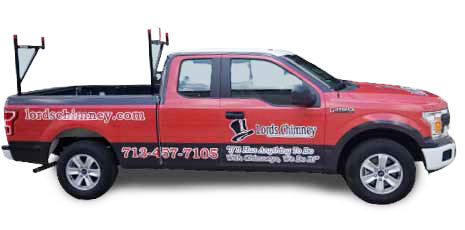
 Fur & Feathers:
Fur & Feathers:  Seal Your Home:
Seal Your Home: